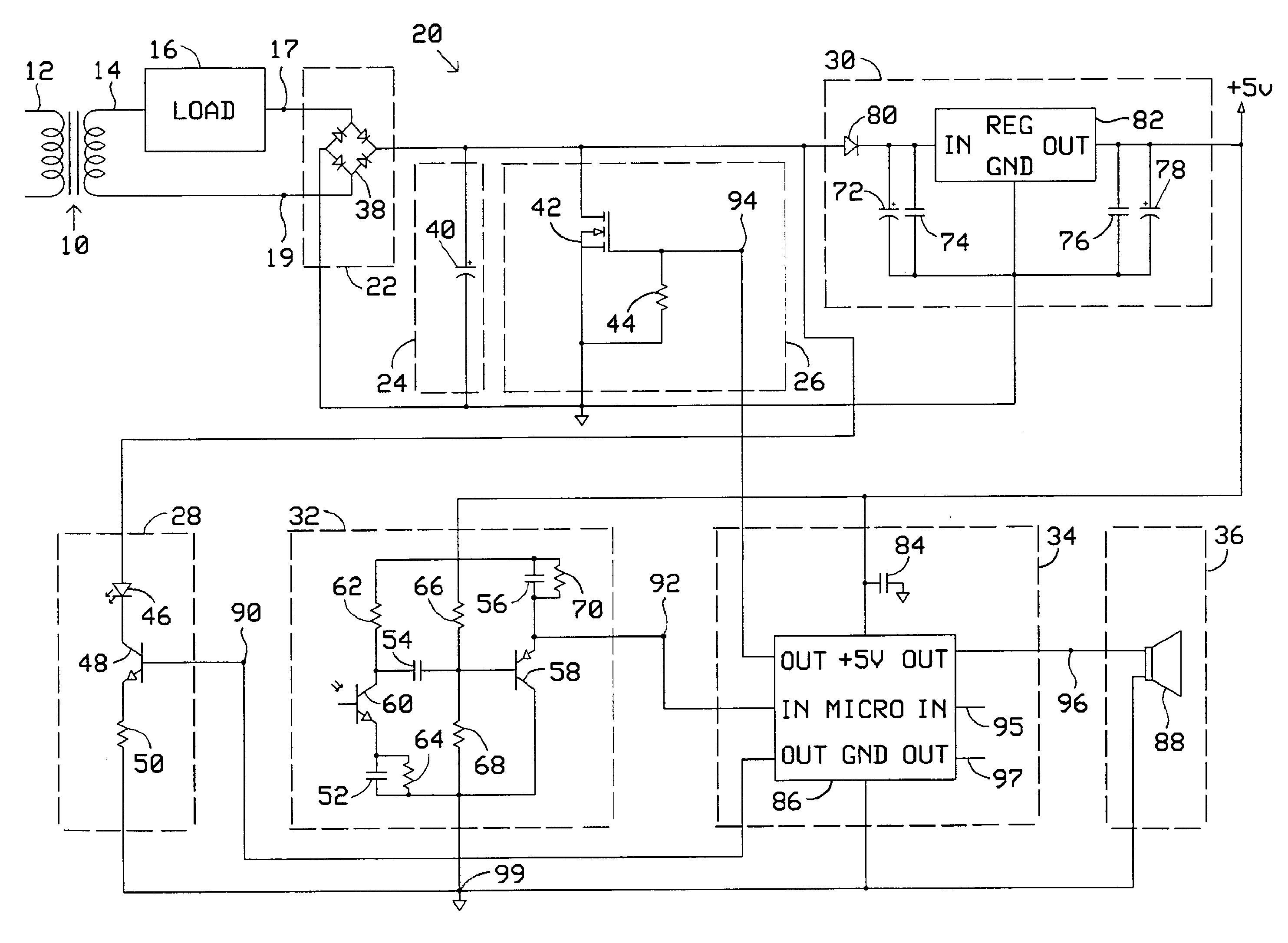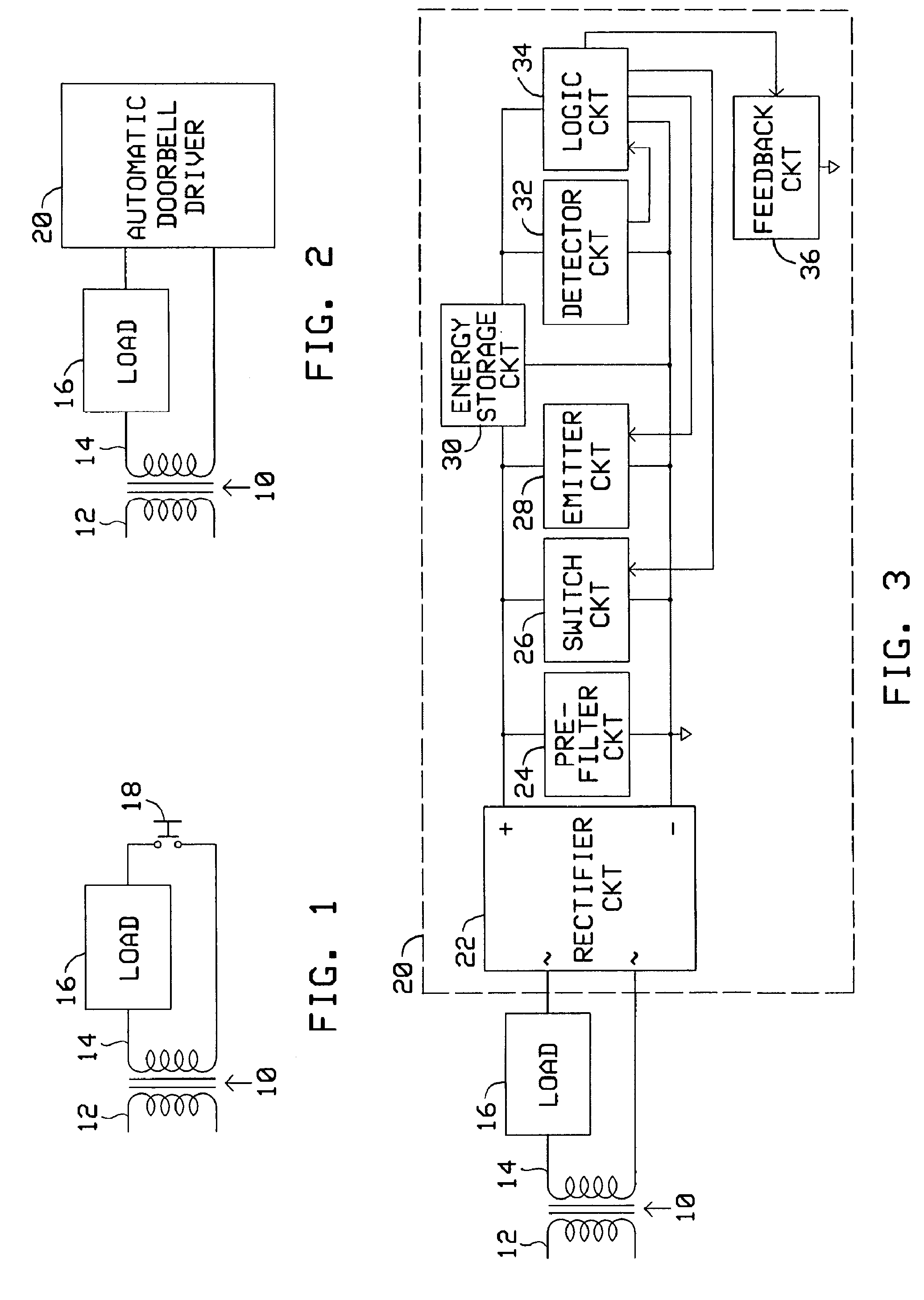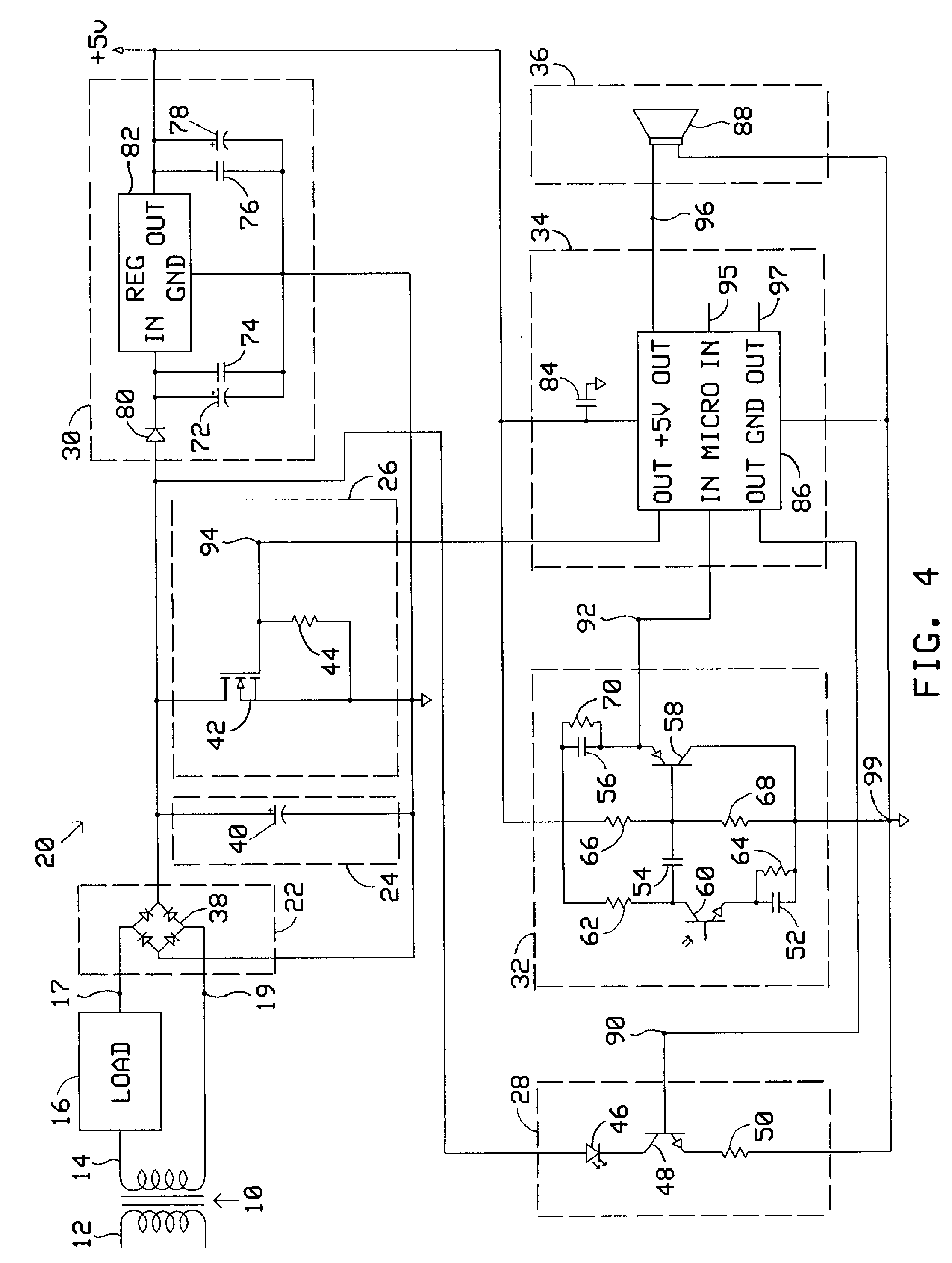Automatic Doorbell Driver
a doorbell and automatic technology, applied in the field of doorbell systems, can solve the problems of preventing their widespread application, requiring periodic maintenance, expensive, and/or difficult to install, and achieve the effects of reducing the number of automatic doorbells
- Summary
- Abstract
- Description
- Claims
- Application Information
AI Technical Summary
Benefits of technology
Problems solved by technology
Method used
Image
Examples
first embodiment
Operation of
[0018] Operation of automatic doorbell driver 20 comprises three phases; a sensing phase, an activation phase, and a feedback phase.
[0019] During the sensing phase, microprocessor 86 provides a pulsed voltage above a threshold level at node 90 thereby intermittently turning on transistor 48 and diode 46 causing diode 46 to emit pulsed light toward a proximity zone outside a building's doorway. When an object, such as a person, enters the proximity zone, the pulsed light is reflected off the object and is thereupon sensed by phototransistor 60 which in conjunction with capacitor 52 and resistors 62, 64 operates as an inverting amplifier configured to provide unity DC gain and high AC gain. This configuration ensures that the amplifier is most responsive to pulsed light emitted from diode 46 and least responsive to steady state light emitted from other sources such as incandescent light or daylight. The sensed reflected pulsed light off the approaching person results in a...
second embodiment
Operation of
[0028] Like the previous embodiments, operation of the alternate embodiment comprises three phases; a sensing phase, an activation phase, and a feedback phase. During the sensing phase, operation is identical to that of the previous embodiments.
[0029] During the activation phase, microprocessor 86 provides a voltage above a threshold level at node 116 causing current to flow through resistors 108 and 110 resulting in a corresponding voltage above a threshold level at the base of transistor 100 thereby turning on transistor 100. Resistor 108 limits the current at the base of transistor 100. Pull-down resistor 110 ensures that leakage current does not inadvertently turn on transistor 100. When transistor 100 is on, current flows through resistors 104, 106, and Zener diode 114 resulting in a voltage below a threshold level at the base of transistor 102 thereby turning on transistor 102. Pull-up resistor 104 ensures that leakage current does not inadvertently turn on transi...
third embodiment
Operation of
[0032] Operation of this embodiment is identical to that of the previous embodiments with the exception that during the activation phase, primary load 16 utilizes the stepped down household AC voltage coupled to it when MOSFET 42 or MOSFET 98 is turned on as a trigger rather than to directly produce a desired sound. When primary load 16 detects the trigger, it energizes an internal sound device. The sound device can remain energized indefinitely, even after the activation phase ends, due to the constant source of power provided by the added diode.
PUM
 Login to View More
Login to View More Abstract
Description
Claims
Application Information
 Login to View More
Login to View More - R&D
- Intellectual Property
- Life Sciences
- Materials
- Tech Scout
- Unparalleled Data Quality
- Higher Quality Content
- 60% Fewer Hallucinations
Browse by: Latest US Patents, China's latest patents, Technical Efficacy Thesaurus, Application Domain, Technology Topic, Popular Technical Reports.
© 2025 PatSnap. All rights reserved.Legal|Privacy policy|Modern Slavery Act Transparency Statement|Sitemap|About US| Contact US: help@patsnap.com



